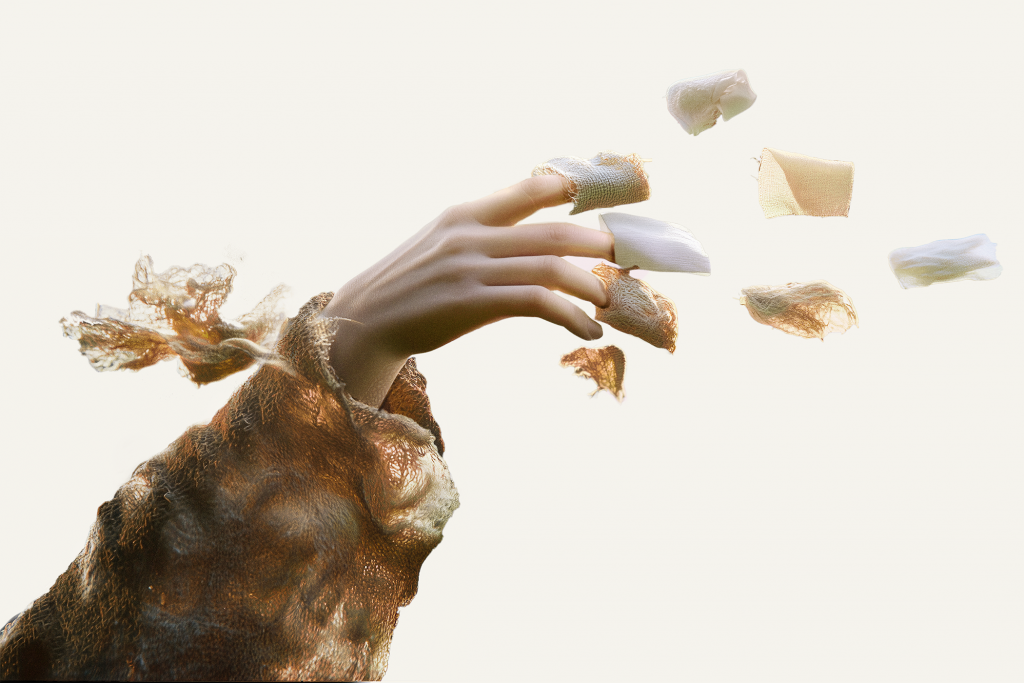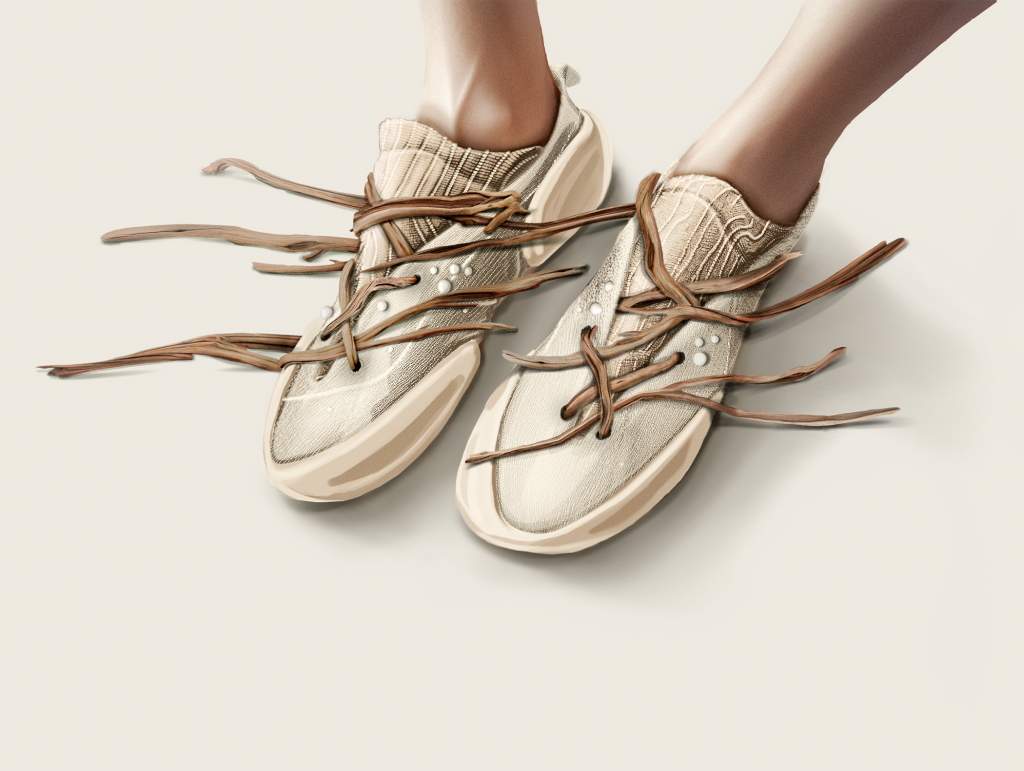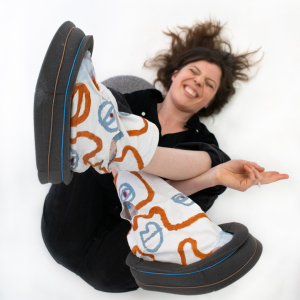This Isn’t Just a Material Book
It’s where we begin to reimagine industry with Nature as our system
Written By Aisha Kuijk
EDITED by ARIYANA RAYATT
Tomorrow,
– I’ll open one of those material books, the kind with epic graphics on the cover and a cryptic address on the back. But this time, it won’t just be another materials catalogue with the polyester blends, cheap handfeel and screaming colors. On the first page, a quiet revolution unfolds: words like “organic”, “dyed with bacteria”, and “woven from regenerative algae fibre” describe a collection that feels like fresh spring herbs.
Page two reveals a playground of woven possibilities: linen, hemp, wools dyed in hues from natural pigments. The next page looks like a landscape of irregular swatches of mycelium sheets – some are thin and structured perfectly for a handbag, others are thick and supple intended for the kind of urban shoe you slip on for your Saturday park stroll with your loved ones. Another page envelops texturised natural latex coatings with wood waste fillers wrapping you in the autumnal cosiness, while hemp fibres mimic the wind brushing across meadows.
We Need Permission
– to choose this book.
Permission from the customer to embrace imperfection.
From the designer to experiment boldly.
From the factory to break its 20th-century routines.
From the manager to embrace ‘risks’.
From the marketer to spark a new era of desires.
While we wait for permission, shall we sit quietly in our corner of comfort and safety?
The longer we defer to the norm, the longer the systems that profit from waste, uniformity, and exploitation remain unchallenged. And while we wait, the cost mounts – not just environmentally, with waste piling in landfills and toxins leeching into soil and water, but creatively and culturally. Are we trading our ability to imagine for the safety of predictability and profit margins? Are we trading our collective future?
While you wait for permission, I’ll go ahead and discover the flowers on the unpaved paths. I will stumble over branches, and find my feet again. I’ll fail tests and look foolish. My shoes might need a hydrating cream and the proportions of the seams will seem off. The buying team will probably reject the uneven textures. They may call out my designs as flaws – I’ll wear criticism like a badge of honour. I’ll shout my failure from the roof tops because failure means I’m trying – and trying means progress.

No. We Don’t Need Permission.
And yes, there will be skeptics: What about the cost per yard? Lab test? Durability? Scalability?
But ask yourself, what is the real cost of hanging to systems that are killing our cultures and our planet? We made polyester profitable despite knowing it shed microplastics. The truth is, that the economics of staying the same are far more dangerous than the economics of change, in the long run.
I’m not naive, I know and experience the challenges of scaling these materials daily, unfamiliar textures, mismatched supply chains, impossible storage conditions, etc. But I also know this – the industry has always found a way to make its worst ideas profitable. Polyester was once seen as cheap, sweaty, and low-quality — and yet the industry scaled it into the most profitable fiber on Earth. If we could scale polyester despite its flaws, why not materials that actually give back to Nature?
This isn’t just a book with material swatches – it is the abolishment of linear industrial processes, it is the redefinition of waste streams into self-feeding cycles. It’s proof that creation can be inseparable from regeneration. It’s a recognisable tool to trust risks and let go of permanence. It’s a bridge to a future where humans align with natural systems, where we care for our belongings.

This is Not My Revolution
It is yours too, it’s a call to every stakeholder in our industry – designers, manufacturers, customers, investors, marketers, managers – to join in the radical act of trusting and nurturing Nature.
Stop fighting it. Stop asking for permission to create differently. Start questioning every decision and every material. What does it give back? How does it live? How does it transform? How would your PNL look if shoes were borrowed materials we must return to Nature? What if every customer journey ended in renewal, not waste? What if shoe design were simply a vehicle to nurture a forest?
Stop clinging to artificial perfection. Start embracing the poetry of Nature’s chaos, and one day when you are flicking through that material book of Nature’s delicacies you will wonder why we waited so long.

The BioDesign Newsletter
- Issue 53: Resilience in Biodesign: Scaling Amid Setbacks
Industry leaders face financial turbulence, but fresh alliances and material advances highlight a sector refusing to slow down.
- $50 Billion in Waste, Algae Ink at Scale, and Japan Invests in LA Fibres
The Summer Developments of 2025 in the Next Generation of Materials and Technologies
- Could Cross-Industry Biomaterial Partnerships Outpace Single-Sector Innovation?
How diversified platform strategies will improve commercial viability beyond single-application biomaterials
- From Chanel to Shein: Is Resource Scarcity a Stronger Catalyst Than Legislation?
The impact of consumer demand, resource scarcity, and regulations across fast-fashion, luxury houses & sportswear
- House of BioDesign Newsletter #047
Industrial-scale recycling, biodegradable pigments, and closed-loop systems continue to advance amid shrinking policy ambitions
